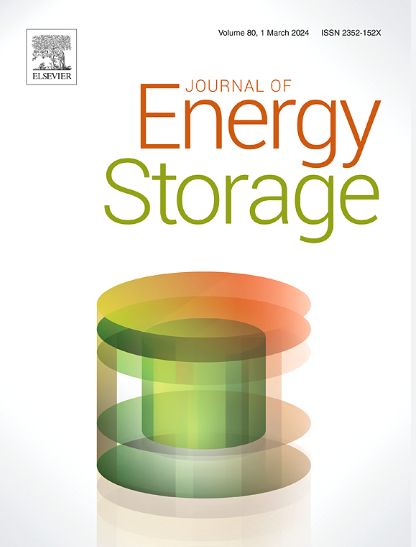全面回顾优化相变材料在热能储存:纳米颗粒的作用,鳍结构,和数据驱动的方法
IF 8.9
2区 工程技术
Q1 ENERGY & FUELS
引用次数: 0
摘要
热能储存(TES)系统,特别是那些利用相变材料(PCMs)的系统,在提高可再生能源系统的效率和可持续性方面发挥着至关重要的作用。pcm在相变过程中存储和释放能量,有效地解决了太阳能、风能和水力发电的间歇性问题,并提供了可靠和高效的存储解决方案。然而,一些挑战阻碍了它们的最佳性能,包括低导热系数(TC)、慢传热速率和过冷效应。本文回顾了最近的创新成果,主要是通过加入纳米颗粒(NPs)(如铜、氧化石墨烯和生物基材料)来提高这些系统的性能,以改善TC,加速相变,提高传热效率。这也强调了平衡温度的提高与潜热储存能力的重要性。此外,确保长期稳定性也是一个问题,因为随着时间的推移,NP团聚和相分离会降低系统性能。为了解决这些问题,优化NP浓度和实现均匀分散至关重要。此外,TES系统的设计,包括先进的翅片配置,在最大化传热和提高系统效率方面起着至关重要的作用。此外,本文还探讨了优化策略、机器学习(ML)、深度学习(DL)和多目标优化方法的应用,以提高TES系统的有效性,并特别强调了利用np来增强PCMs。本文批判性地评估了各种优化技术,包括元启发式算法和ML模型,以评估它们在预测和优化pcm和np增强系统的热物理性质方面的有效性。它还探讨了NP添加剂的最佳组合,它们的浓度,以及合适的PCMs,以最大限度地提高存储容量,延长开放和封闭系统的负载放电周期。该研究强调了重大进展,确定了当前的局限性,并概述了将数据驱动方法应用于TES系统设计和操作的未来研究方向。本文章由计算机程序翻译,如有差异,请以英文原文为准。
A comprehensive review of optimizing phase change materials in thermal energy storage: The role of nanoparticles, fin configurations, and data-driven approaches
Thermal energy storage (TES) systems, particularly those utilizing phase change materials (PCMs), play a crucial role in enhancing the efficiency and sustainability of renewable energy systems. PCMs store and release energy during phase transitions, effectively addressing the intermittency of solar, wind, and hydro power sources and providing a reliable and efficient storage solution. However, several challenges hinder their optimal performance, including low thermal conductivity (TC), slow heat transfer rates, and supercooling effects. The review examines recent innovations that have focused on enhancing the performance of these systems by incorporating nanoparticles (NPs), such as copper, graphene oxide, and bio-based materials, to improve TC, accelerate phase transitions, and enhance heat transfer efficiency. It also highlights the importance of balancing the improvement in TC with the latent heat storage capacity. Additionally, ensuring long-term stability is a concern, as NP agglomeration and phase separation can degrade system performance over time. To address these issues, optimizing NP concentration and achieving uniform dispersion are crucial. Moreover, the design of TES systems, including advanced fin configurations, plays a vital role in maximizing heat transfer and improving system efficiency. Additionally, this review investigates optimization strategies, the application of machine learning (ML), deep learning (DL), and multi-objective optimization methods to boost the effectiveness of TES systems, with a specific emphasis on the utilization of NPs to enhance PCMs. This review critically evaluates various optimization techniques, including metaheuristic algorithms and ML models, to assess their effectiveness in predicting and optimizing the thermophysical properties of PCMs and NP-enhanced systems. It also explores the optimal combination of NP additives, their concentrations, and suitable PCMs to maximize storage capacity and extend the load discharge period for both open and closed systems. The study highlights significant advancements, identifies current limitations, and outlines future research directions in applying data-driven approaches to the design and operation of TES systems.
求助全文
通过发布文献求助,成功后即可免费获取论文全文。
去求助
来源期刊

Journal of energy storage
Energy-Renewable Energy, Sustainability and the Environment
CiteScore
11.80
自引率
24.50%
发文量
2262
审稿时长
69 days
期刊介绍:
Journal of energy storage focusses on all aspects of energy storage, in particular systems integration, electric grid integration, modelling and analysis, novel energy storage technologies, sizing and management strategies, business models for operation of storage systems and energy storage developments worldwide.
 求助内容:
求助内容: 应助结果提醒方式:
应助结果提醒方式:


